READ THIS FIRST: This is a very long post – over 3,000 words. It doesn’t have any pictures, except for one at the very end, and it doesn’t talk about knitting, unless you count the fact that I mention two yarn stores. This post is about emotions and opinions and I know that a lot of people don’t read knitting blogs for emotions and opinions. They read them for knitting and I completely understand and respect that. Tomorrow’s post will be all about knitting and yarn. But I was a writer long before I was a knitter or photographer. Writing is my blood and what I felt while I was visiting New Orleans needed to be written down. I’m extraordinarily lucky that there are many of you that keep coming back to read my blog and I’m full well taking advantage of that fact to share my feelings and opinions and my writings on New Orleans with you. I’m putting it out there. You can choose to read, or you can choose not to read. Read some of it. Read all of it. But I’m putting it out there. I thought about closing the comments for this post, but I’d like to hear your feelings about NOLA. Have you been there before? Have you been there since the Hurricane and subsequent flooding? Are you from there? I had never been before last weekend but I will be back. Mark my words, I WILL BE BACK. Thank you for your thoughtful, RESPECTFUL comments. I greatly appreciate your reading.
Cara Davis
September 12, 2006
We flew into Louis Armstrong Airport Thursday night after connecting in Chicago. On the second leg of the trip we watched a decent amount of the last two acts of Spike Lee’s When the Levees Broke. It was awfully strange getting off the plane, tired and a bit disoriented as you always are landing in a new city, and recognizing everything. We had seen body after body lining the floor of the airport on TV – dead bodies, hurt bodies, misplaced bodies. We had heard about people begging to be put on planes out of the hell they had lived through only to end up with a one way ticket and no idea of their destination. The airport was quiet. And empty. But the pain echoed in the corridors. We saw the Jazz Greats mural on one side of the large waiting room, and on the other we found the haunting specter of Icarus, hanging over the room. It was quite scary.
Our ride to the airport was no less eerie, taking us along the highway in the dark, peering through the bus windows wondering what devastation was out there to behold. And then we passed by the Superdome. It was all I could do not to cry.
I have to admit I was reticent about going to New Orleans. I hate flying and I didn’t want to get on a plane. And the recent news coming out of NOLA hasn’t been the best – bullets, crime, the stagnation of rebuilding taking its toll on the people. But a part of me thought it was our responsibility to go. To be a WITNESS. And I’m so glad we went.
On Friday morning I woke up and looked forward to a morning on my own. Amanda had emailed me a list of yarn stores to check out and I figured I would start with the farthest from where I was staying. I called down to the concierge and asked her the best way to get to the Garden District Needlework Shop on Magazine Street. She told me I could take a cab, that would cost about $15 or I could take the #11 bus. I don’t know, but $15 seemed like a lot to me to go about 2 miles (probably the same as NYC) so I took the bus. This might not seem like a big deal to you, but for me it was HUGE. I’m not sure I’ve ever taken public transportation – by myself – in a strange city. But there I was waiting on the corner of Canal and Magazine for the #11. At every opportunity I tried to engage the people around me. I looked them in the eye and I smiled constantly. I was full of positive energy. This is NOT my usual demeanor. I’ve lived in the NYC area for nineteen years and I’ve perfected indifference – on the bus, the subway, at the post office. Wherever, whenever. But in New Orleans I felt like I wanted these people to know that I cared what happened to them. I wasn’t afraid of the badness that had touched them. They were real to me and I wanted to be real to them.
As I road the #11 down (up?) Magazine, I looked out the windows and once again was forced to imagine the suffering that went on behind closed doors. Had these homes been flooded? Were the houses empty waiting for their families to come home? Had children been separated from their parents? Everything seemed okay, if not a bit shabby and yet there was an emptiness to the streets. There were maybe six people on the bus with me and I was by far the only tourist. When I got off at the 2100 block of Magazine, I stood and looked around – not sure where I was and where I was going. I had forgotten the piece of paper with the address of the Garden District Needle Shop so I stopped into a store along Magazine. The concierge had told me that the neighborhood was one of an eclectic mix of shops – you could buy a Louis XVI chair at an antique store and then have it tattooed on your arm at the shop next door. The store I ended up sold lots of kitschy toys and clothes for kids and adults and I asked the young woman at the counter if she knew where the yarn store was – she told me it was across the street, but I felt like I needed to look around her store before I left.
I asked her if the neighborhood had flooded. She told me no, but that they had had some hurricane damage and that after the floods looters had come. I told her that I had seen the Spike Lee film before I left and she asked me what I thought of it. She, a white woman, told me she was nervous to see it because she had heard it was really very biased. I told her that I thought it was about as balanced as Spike could get – but that in the hands of someone like Michael Moore it could’ve been a lot worse. We talked some more about what had happened and how it had played out and she was the first white person, but not the last, to tell me that what happened in New Orleans was a class issue, not a race issue. It was about poverty, not the color of your skin.
I looked around the store desperate to spend some money before I left to go to the yarn shop, and ended up with a Desire New Orleans magnet. It wasn’t much, but they were very grateful that I had come.
Before I left the woman at the store told me about Vera, who had lived in the neighborhood and had been hit by a car when people were running out of town. Her body had been left to rot for many days, until finally the community came together to bury her where she had died. The grave is at the corner of Magazine and Jackson, where I stood and waited for the bus to go home.
The Garden District Needle Shop doesn’t look like much from the front door, but I was a bit shocked when I walked in to see how far back it went. It’s got something of a warehouse feel – white walls and low shelving in aisles on the floor. There were only a few people in the store – it was hard for me to tell who worked there and who was a customer. I wandered around, a silly smile plastered to my face and I listened as the women talked about coming home and the state of their houses and the damage and it was clear that what happened during Katrina is still VERY fresh a year later. People are just now coming back.
I browsed and browsed – determined to spend money – and after
I had found some Koigu I went up to the counter to buy it. The sales woman asked me if I had ever shopped there before. I told her this was the first time I had ever been to New Orleans. She asked me why I had come, and I told her, and then we talked about the storm and the flood. She lived close to the store, so had no flood damage, just a bit from the hurricane, but she pointed to another woman working in the store, she lost her house. I told them I had seen the Spike Lee movie (I don’t know why I kept bringing this up – because it was so fresh in my mind? I wanted to be controversial?) and the original clerk – who I think might have been the owner – told me that more white people died or had catastrophic injuries during the storm and floods than black people. Again I was told it was a class issue – not race. We talked a bit more and she thanked me for coming to visit. She told me to go home and tell people that there’s nothing dangerous about New Orleans. The only people being killed are young men trying to reestablish or establish their drug turfs. I told her I thought that if that’s what you were trying to do – it probably wasn’t safe for you anywhere.
I told her I was very happy to be in New Orleans and hoped to come back to visit soon.
I went out to catch the bus back to the hotel – I didn’t have a lot of time to walk around as I had to meet George fairly soon – but I tried to talk to people – ask for help. Where do I get the bus? Do you know when it comes? Just a little bit. It made me feel better. While I was on the bus there was a white man talking to two black women across the aisle. The man had a long bushy beard and seemed not to have many teeth and he had a cane. He was overweight and in the heat he seemed to be struggling a bit. I listened to him tell the women that he had walked twelve hours trying to get out of the storm? Flood? I’m not sure. But he said that when they picked him up they asked him where he was going and he told them Baton Rouge. I think it had taken him twelve hours to walk a fairly short distance. Whoever picked him up took him to a shelter.
All around the bus were signs about evacuating. Do you have a plan? they asked. Have you remembered your friends and family in that plan? MAKE A PLAN! Don’t wait to have a plan in place.
A man got on the bus and needed a quarter. I jumped up to offer him one – just a measly quarter – and he sat across from me and started to talking to me. “Hot enough for you?” I smiled and said yes – it was hot – and it had just started to get cool where I’m from. “Where are you from?” he asked. I said New Jersey and he asked if I lived in New Orleans now. I told him no. I was just visiting.
When he got off at the next stop I understood again that this wound is very very fresh. And then I thought about how a year had passed and how a year is really nothing in terms of time and that how even five years later I can still sit with friends and tell the story of what my 9/11 was like. And they can share with me and that for the people of New Orleans their 9/11 is ongoing and seemingly never ending.
When I got back to the hotel and met up with George, I was so absolutely PROUD of myself. Proud that I had taken the bus, proud that I had talked to people about what had happened. I felt like I had made a connection. Maybe pride isn’t the right word for how I felt. I was a little bit giddy about it. I think, really, that somehow, someway, on the #11 bus that Friday morning, I fell in love with New Orleans.
Later on that afternoon we took a walk to the French Quarter. We were wandering around aimlessly really with no destination in mind and I commented to George that the streets felt incredibly empty. It was Friday afternoon around 4:30 and we were walking on Chartres in the direction of Jackson Square. Completely by accident I came upon The Quarterstitch, one of the other yarn stores Amanda had told me about. We went in and I started looking around – the young woman behind the counter was listening to NPR and when she turned around she seemed surprised to see us. Once again, we talked for a bit while I shopped for yarn – was there flooding? Where did she live? Was she from New Orleans? In the middle of our talk George had left the store to take a phone call and suddenly he came running back in to get me. We had seen a band strolling around before, but they were too far away and turned a corner before we could catch them, but here they were again. I told the clerk I’d be right back – I still wanted the yarn (more Koigu) as I ran after the band. I caught the tail end of it – apparently it was a Second Line, often associated with a funeral – with maybe ten people dancing behind the small band, waving white handkerchiefs in their hands.
When I got back to the store I asked the sales clerk and another woman who had come in if the streets were normally as empty as they were. They told me that it was still summer, so things were pretty quiet, but that it was much more quiet than usual. Eerily quiet, the young woman said.
The next morning I woke up to sheets of rain falling outside the hotel window. My first thought was that the people here must hate when it rains. The children must be terrified.
Later on that day the rain had stopped and we took a tour of the city. Lunch was at Deanie’s Seafood in Metairie about two blocks from Lake Pontchartrain. From there we headed to the 17th Street Canal Levee, which was breached during Hurricane Katrina, and onto the neighborhood of Lakeview, which I think is in Jefferson Parish, right outside of New Orleans. Home after home was gutted and empty. Through the missing windows and doors you could see black walls leading out to the light at the other end of the house. Mattresses, chairs, refrigerators, insulation piled up in the front yard. And then there were the spray painted door markings left by the search and rescue crews. Every time a house was searched, the party spray painted an X on the front door or wall. The number at the 12:00 point of the X was the date the home was searched, at 9:00 the crew that did the searching, 3:00 any hazards in the house, and finally, at 6:00 the number of bodies discovered. Thankfully, I didn’t see any homes with number other than 0 at 6:00, but there are stories that the crews didn’t check well enough, or couldn’t check well enough and many people returned to their homes to find 0s on the door and bodies inside.
Those markings are chilling. I kept taking out my camera and I kept putting it away. I didn’t feel like I could take a picture of those doors. I don’t know if I felt like I couldn’t do it justice, or it wasn’t something I wanted evidence of – I don’t know. The memory of those doors will stay with me longer than any photograph ever could.
Along the streets of Lakeview we saw homes already rebuilt. We saw homes being cleaned out, FEMA trailers in the front yard, but most of all we saw the empty shells of homes. Where had the people gone? Were the families together? Safe? Secure?
Would they, COULD they come back?
From Lakeview we traveled back to New Orleans. Along the way were orange Xs and water lines as far as the eye could see. Some people have chosen to paint over the Xs and the water lines, but it seemed like most were keeping them there. A testament perhaps. Or maybe they just never came back. Occasionally, of the side of the highway, we’d come upon a large group of FEMA trailers. The modern day tent city.
As we got closer and closer to the French Quarter, the visible damage was less and less. But people are getting tired. From what we were told, in the months after Katrina – when the proverbial dust had settled – people were energized. They wanted their city back! They were willing to fight. But bureaucracy and politics and honestly, ineptness and ignorance, are taking their toll on the community. They are exhausted fighting for their homes. The one thing all people can agree on – whether they are black or white or rich or poor – is that the devastation in New Orleans was not caused by a natural disaster. It was MAN-MADE. The Army Corps of Engineers has taken responsibility for what happened to the Levees. For instance, the 17th Street Canal Levee – the flood wall was supposed to be built 17’ into the ground. It was built 10’ feet into the ground. From what I understand, the water didn’t just go over those walls – it went UNDER the walls – picking them up and splitting them into little pieces.
The people of New Orleans are angry. And rightly so. They’re angry at FEMA and they’re angry at the Army Corps of Engineers and they’re angry at their government – at EVERY level. Someone on our tour asked the guide whey they voted in Ray Nagin again if everyone hates him so much. He told us that he voted for Nagin because the other guy was saying the SAME EXACT THING. They felt that the devil they knew was better than the devil they didn’t.
I don’t know, honestly, where class stops being an issue and race takes over. In my limited experience there doesn’t seem to be that much difference. Maybe because of where I’ve lived – I don’t know. I also don’t know if there were more poor black people in New Orleans than there were white, but it would seem that way. And while the floodwaters didn’t discriminate, housing does and the poorer areas are lower and closer to the water. We didn’t go to the Ninth Ward – the tour buses aren’t allowed in anymore and I think many of the homes have been bulldozed anyway. The area of Lakeview we did go into was middle class – and I think predominantly white. Everyone lost something those tragic days in New Orleans. Everyone in this whole wide world lost something.
I’m sure some parts of New Orleans have survived relatively physically unscathed. We had beignets at Café Du Monde and they were fantastic. We ate Bananas Foster at Brennan’s and I can imagine it was as good as it ever was. Bourbon Street is as gross as I had heard. I ask those that have been there before – were the sex clubs lining the streets always so raunchy? I’m by no means a prude, but these clubs were really awful. Most of the street was like one big bar, but there was a really desperate seedy element as well. Was that always there? George was at the casino one night and he was told that the city is teeming with single men – the men that have come back to fix their homes while the family stays away – or men that have come looking for construction jobs. I found this really interesting – from a sociological perspective. How will the city change without the influence of women? (Of course, women are still there – but if the men out number the women by such a large margin, things are bound to change.)
Anyway. This has turned out to be far longer than I thought it would be but I felt like I needed to bear witness to what I saw and experienced. As I said early on, I fell in love with New Orleans. THIS New Orleans – battered and sad and overwhelmed and still standing. I have nothing else to compare it to, I know nothing of the character of the city before Katrina, but I left a piece of my heart there nonetheless.
Thank you for reading.
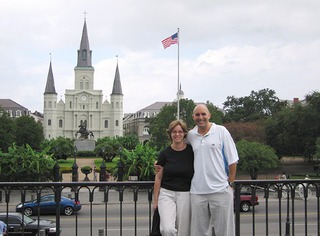
RENEW ORLEANS is a non-profit group helping to save the music of New Orleans. Buy a T-Shirt.

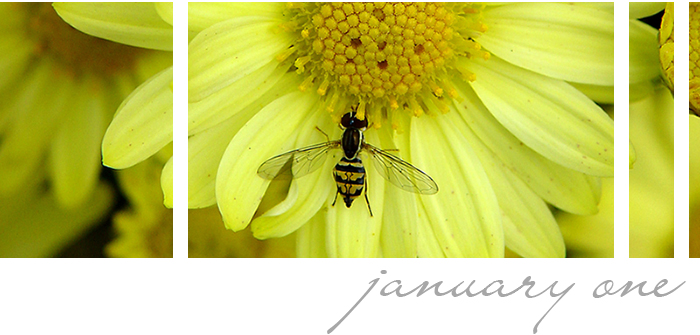
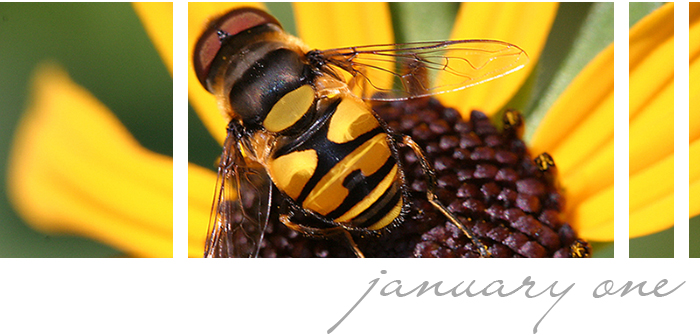
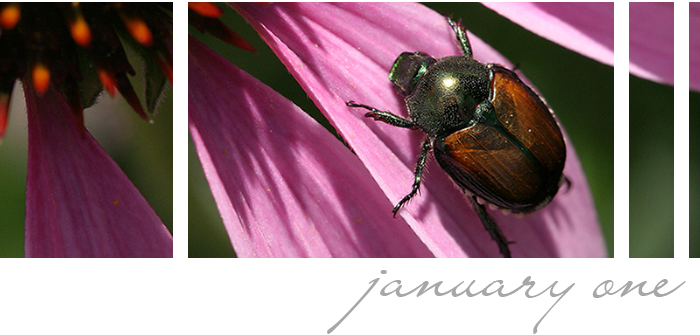
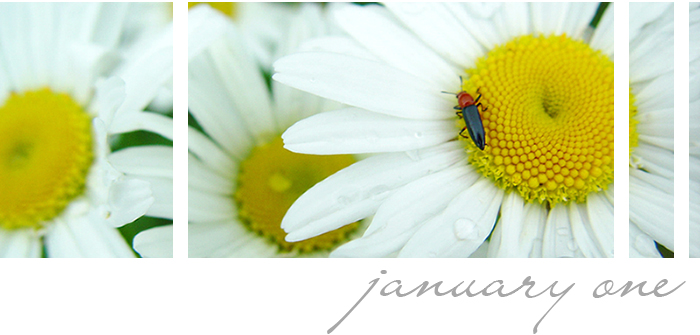
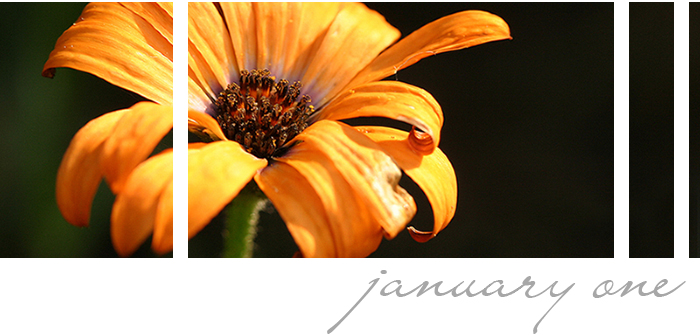
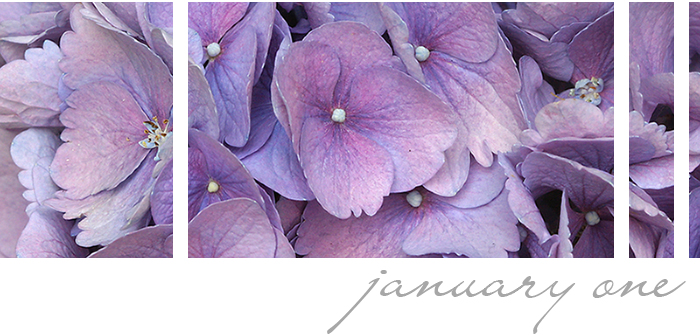
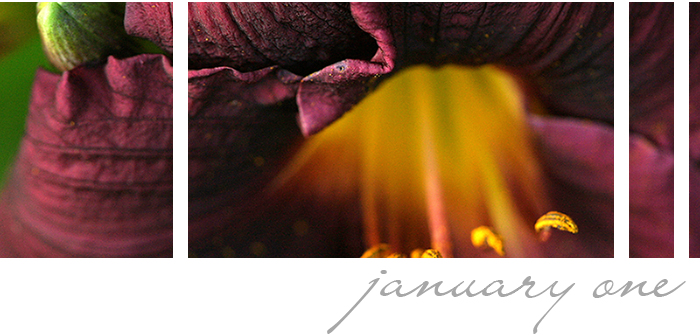






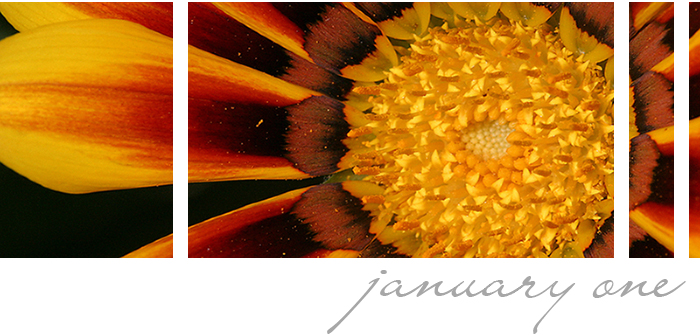
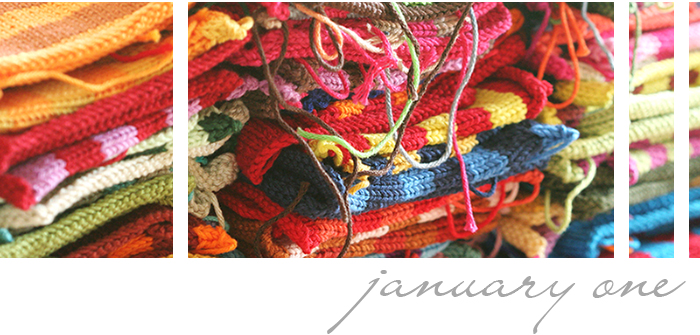
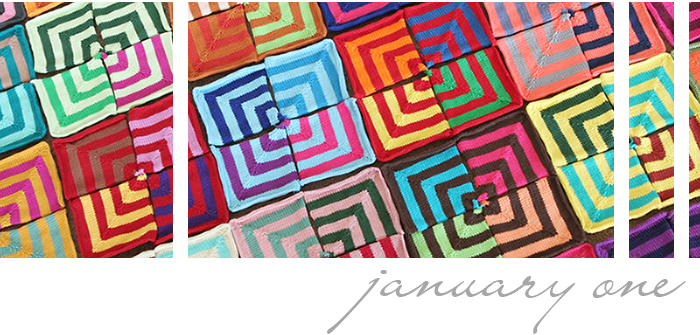

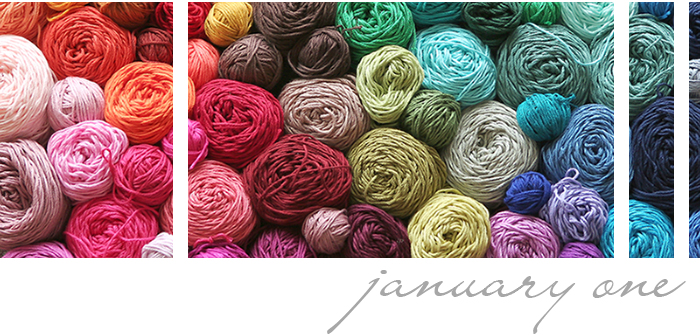

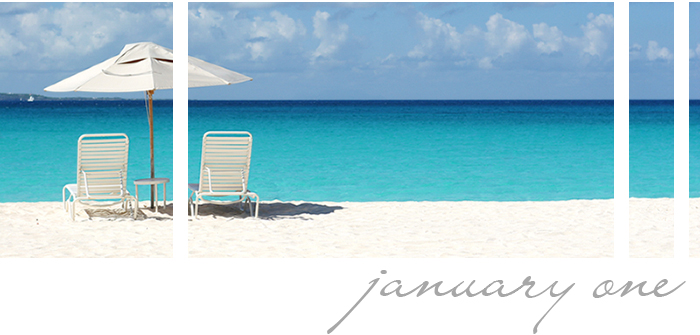

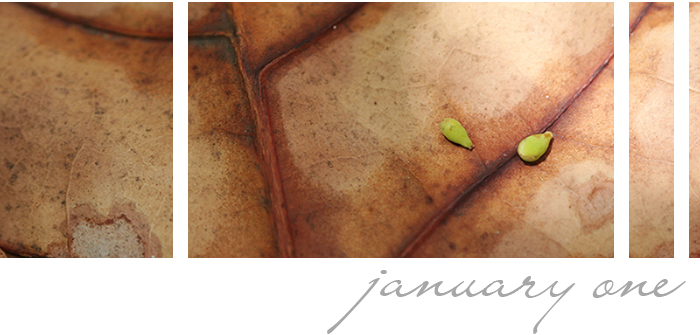
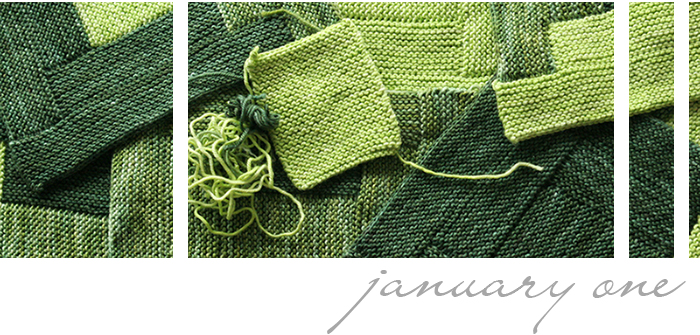
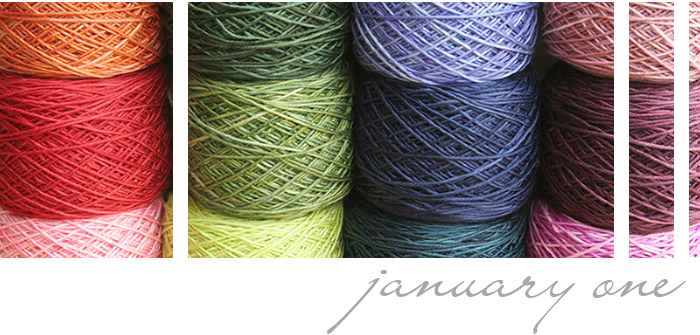
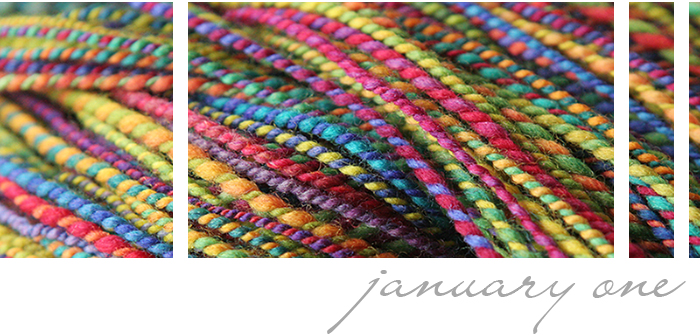
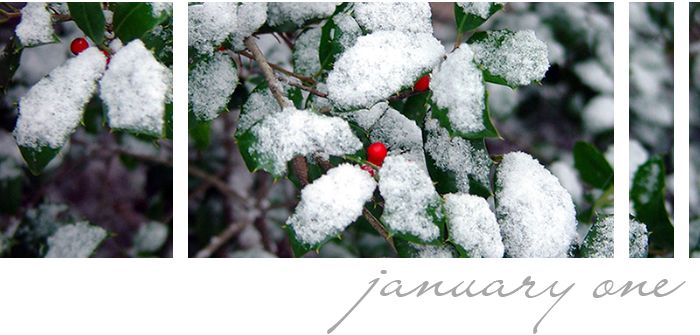
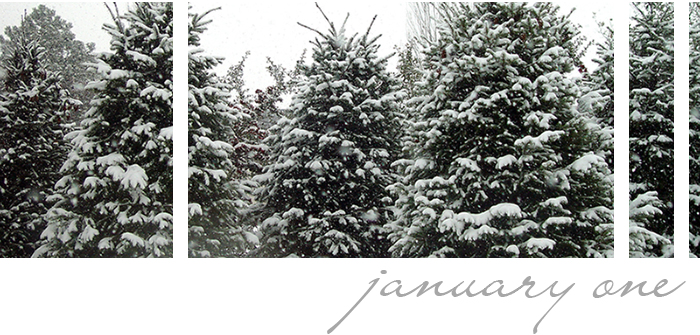
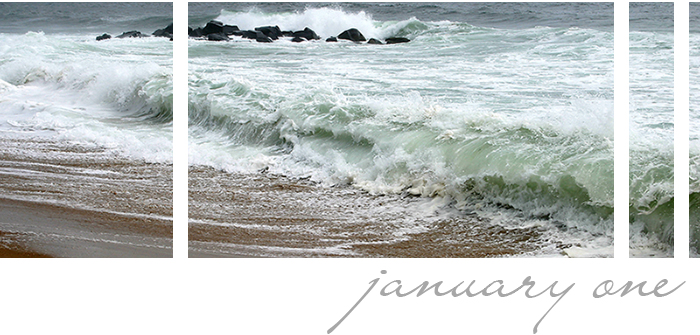
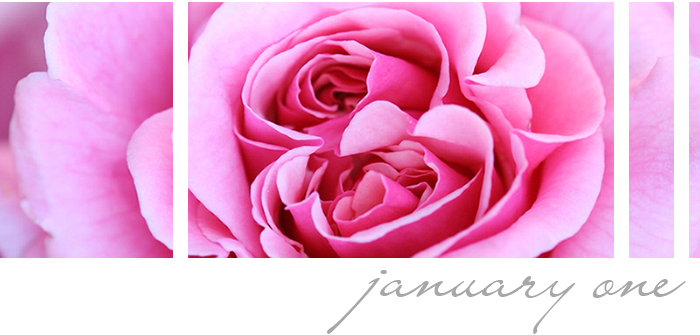
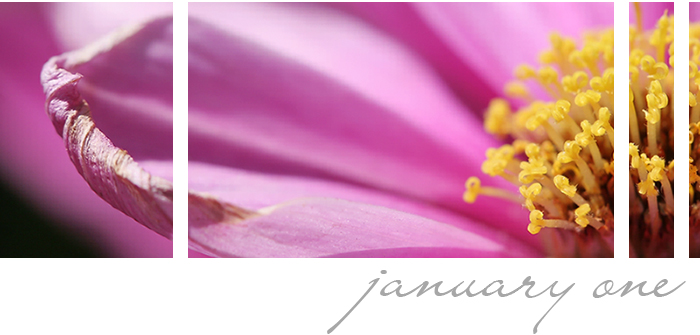
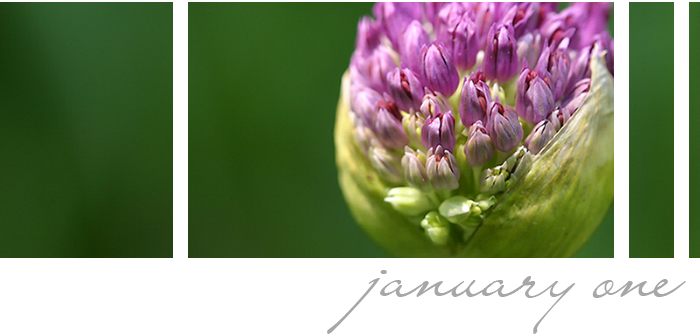
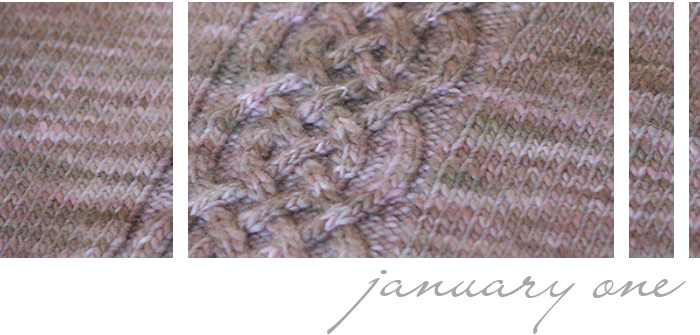
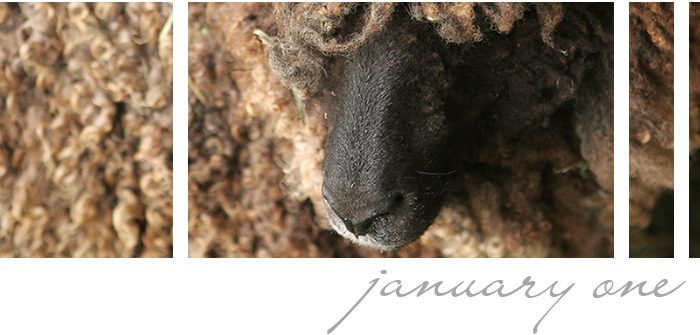
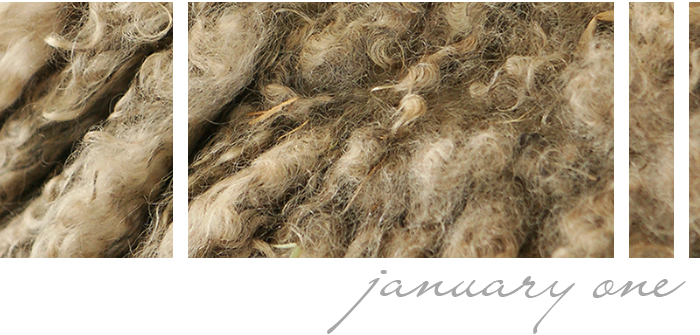
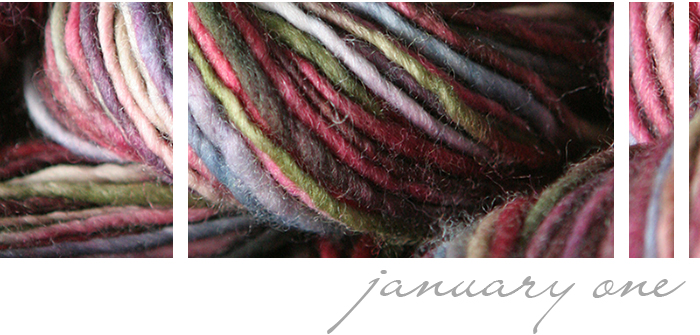
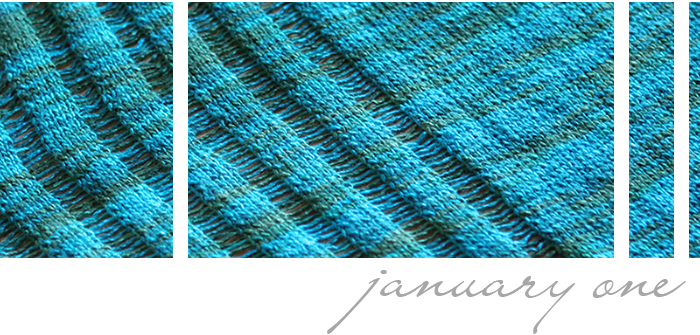
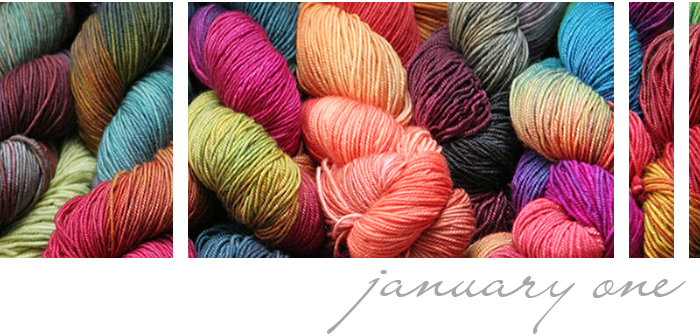
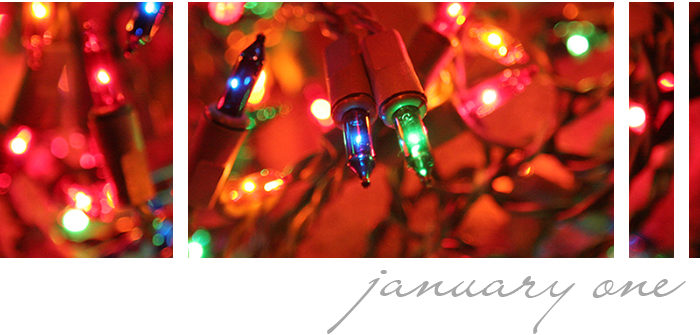
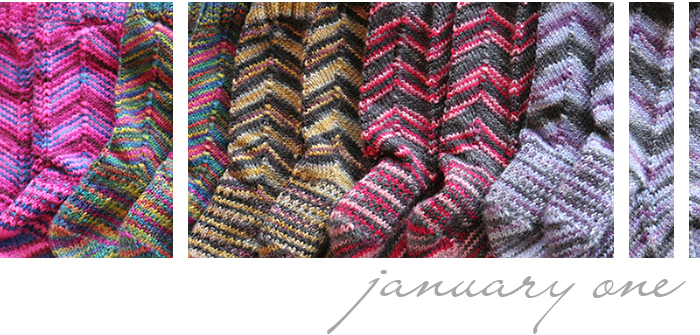

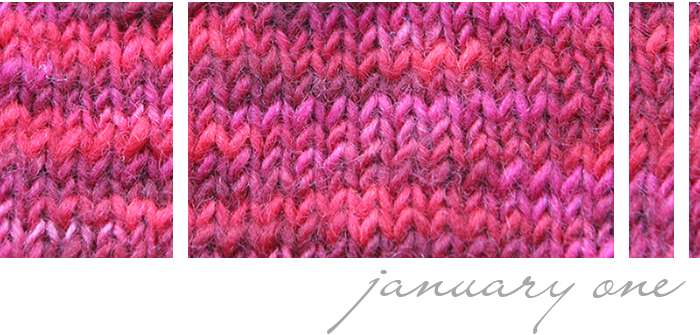
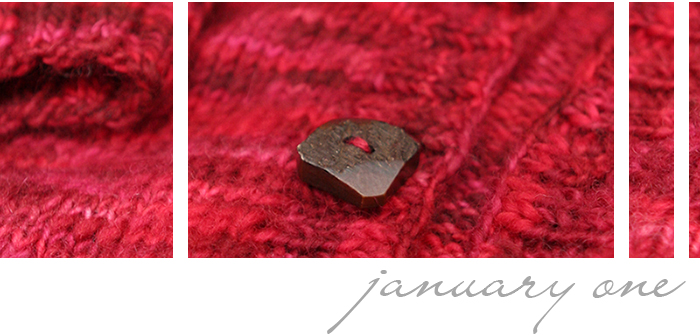
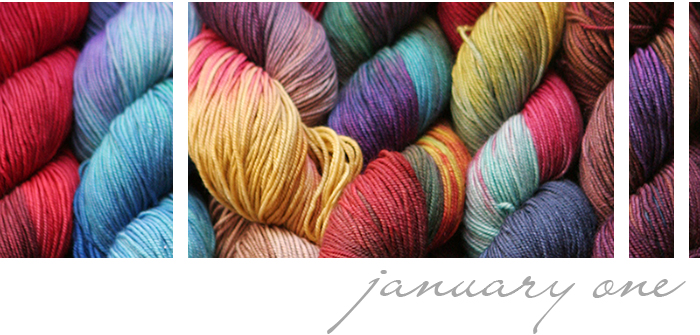
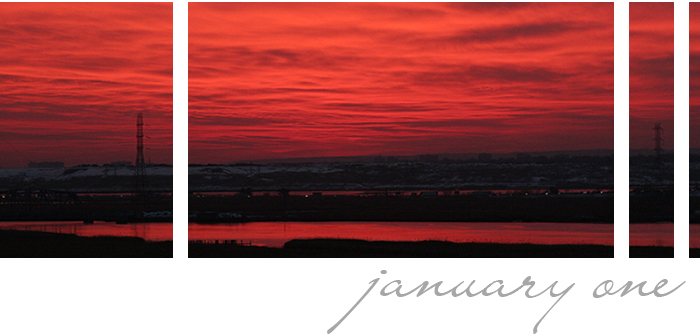
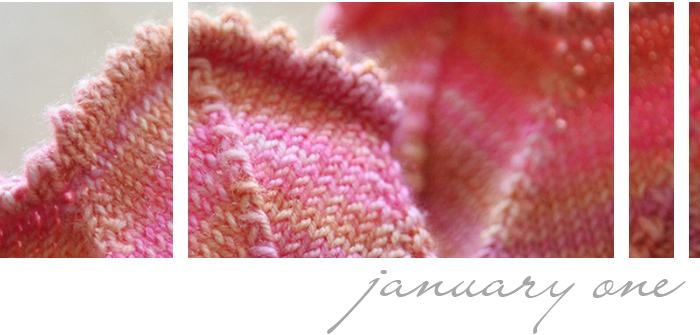
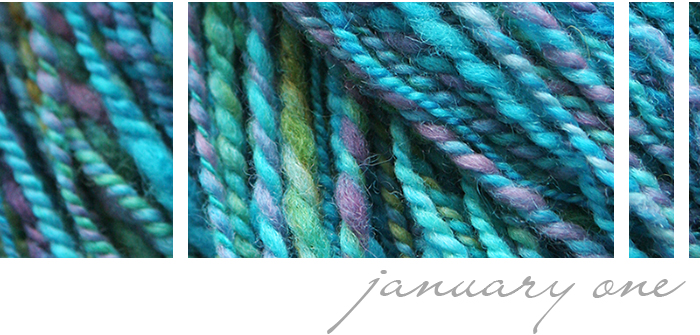

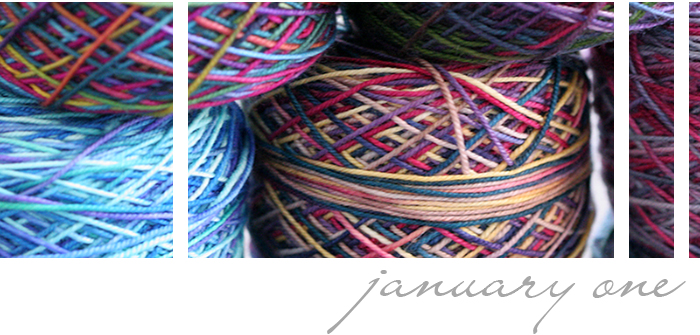



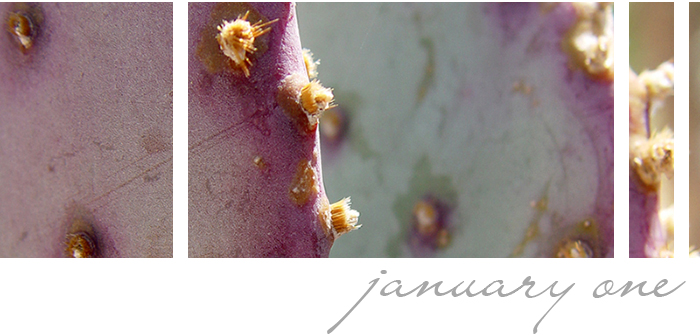
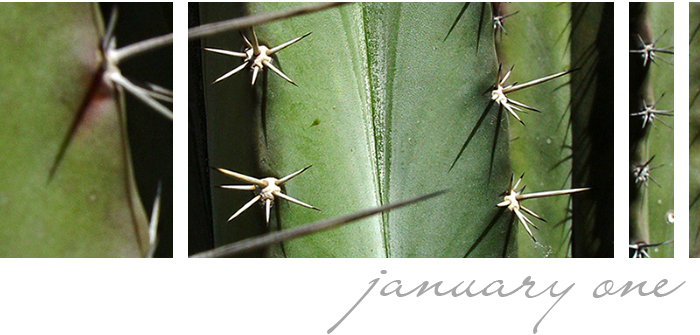


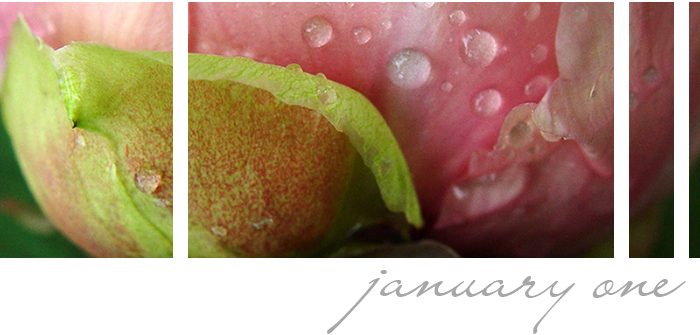


I was in NOLA in 1987 and Bourbon St. was so bad but interesting to see. We sat in the Café Du Monde and ate Bananas Foster at Brennan’s! It was memorable. I also shopped at Quarterstitch and bought yarn (pre Koigu);-)
What happened in NO did happen to us all. Could that happen to any of us anywhere in America? Could our government turn it’s back on us, too. Will we learn to talk, respectfully, about proverty and race? If not, we all loose more than NOLA.
Hi Cara-
This is the first time I’ve commented here, but I’ve been reading your blog for awhile. I went to school in New Orleans and lived there for a few years, but I am from (and currently live in) L.A.. Your recount of your experience of New Orleans is touching. New Orleans is an easy place to fall in love with, even battered and torn. I hope many will read this and be encouraged to visit the city and bring back the livelihood it once overflowed with. It will take a long time for New Orleans to recover, and it is visits by people like you and me that will bring it closer and closer to being that city it once was. Thank you for sharing…
Thank you for this, Cara. It’s all true, and you painted an accurate picture. I live here in New Orleans, in Metairie – between Lakeview and the airport. My home was not flooded, though my roof was damaged and some water got in. Many houses in my neighborhood did flood, and have been gutted – some have rebuilt, and some have not. I’m white, and lower-middle-class. I evacuated to my sister’s house in Hammond (50 miles northwest) – I lived there for 4 weeks before coming home to a devastated neighborhood and city.
The water did not discriminate. It took those who lived in low areas and some who did not. It affected us all, rich & poor. The poor had less resources (money, transportation, destinations) to evacuate, and more of them died. Those of us who are left behind are scarred permanently. Depression is rampant. We’re all suffering from post-traumatic-stress-disorder. Our city will never be the same, and the recovery is taking so very long that we’re weary to the bone.
Thank you for caring.
Cara – thank you for this – I too have never been to NOLA but after reading this I want to go.
I do hope you try to get this published somewhere where it would reach more readers besides us knitters.
Karen
My brother lived in NOLA for a number of years with his family. I visited often and fell in love with the city. Did many of the things you talked about, saw two Jazz Fests, one Mardi Gras (one was enough for me!), and also fell in love with the city.
Katrina touched my family also. My now grown nephew was still living there, had just started law school at Loyola, was living with his fiancee and her family in Lakeview. He and his girlfriend evacuated. Her dad, grandmother and the pets stayed behind. The dad and grandma were rescued when their house flooded to the second story. The pets had to be left behind. Frantic, my nephew and his girlfriend found someone with a boat, a WEEK later, to see if the pets were alive. There they were, the 90 lb boxer and the very scared cat, alive and dehydrated on the second floor of the house.
So she got her pets back and everyone was safe, but she lost her whole childhood. The house where she grew up, all of the memories of her mom (she passed away a number of years ago). She is still mourning her losses and will be for a while.
I haven’t been back since Katrina. I’m sure I’ll still love it, but it seems like such a different city than before. I don’t think it can ever go back to that carefree, charming place it once was.
BTW, I bought some yarn at Quarterstitch also in about 1998 and have a wonderful wool/silk sweater to remind me of the place.
Thank you for sharing your words with us, I enjoyed it and it affected me deeply.
Thank you…I loved reading every word. I haven’t been back to NOLA for many years. Your words on Bourbon Street brought a smile, I always was surprised at how raunchy that area was. Thank you again.
What an interesting story you have shared. I have never been to NOLA, but friends who have been fell in love with it. A co-worker drove through the 9th ward in March and took pictures of the houses and the X’s. Several had numbers at 6 o’clock. Very sad.
Did some googling on racial statistics for the deceased – 59% of victims were black. I’m not sure if the whites giving you statistics were included the displaced, wounded and damaged or just the deceased.
Cara,
What a beautiful post. It makes me want to go. To buy. To Listen. I think if this is what you’re going to write about on “non-knitting” days, write away!
Best,
Becca
Thank you for sharing this with us. Thank you for being the kind of person to share yourself with the people you met in New Orleans. That’s what brings us back to your blog, you know. YOU. Not just the knee socks. (although they’re damn cute, those knee socks.)
You have your finger on the pulse I think. This was a great post — thank you!
First, let me say that I love your stash! The Tussah/Merino got here and I fondle it warmly!
Second, NO is one of those cities with “character”, like NY! There are places in Brooklyn, Queens, the Bronx and even Manhattan where you wouldn’t exactly be suprised to see anything/everything. And just like NY, it has its share of crime, its share of elitists, its share of middle-class, everyday people. BUT unlike NY, when disaster struck, they did not pick up and WORK together. They came to Texas!
I live in one of the cities where a large number of Katrina evacuees now live. Many are normal, hardworking folk of all colors. But just as many are still recieving aid, sitting around, committing crimes, etc. These were the evacuees that we saw sitting in the stadium, screaming for help. These were the evacuees who didn’t leave, even though they had 3-4 days warning! Corpus Christi, TX, which was on the outlying edge of the warning area evacuated to San Antonio. Galveston (which certainly knows about the devastation of hurricanes) evacuated as well. I really want to know why these people didn’t leave! I’d have been WALKING, if I had to! If we want to lay blame, lay it at the feet of those who didn’t listen, or the city of New Orleans official who let school buses sit who could’ve transported those without means! I agree that FEMA might have managed things better, but who ever said that the government was going to RESCUE us from our own stupidity! If you live in a hurricane prone area, under sea level and they tell you to evacuate…LEAVE!
Thank you, Jo, for your comment. The problem in the New Orleans specifically is that the Hurricane itself did not do that much damage. The problem is that the levees that were supposed to protect the neighborhoods FAILED because they were not built to the specifications listed. The Army Corps of Engineers has taken full responsibility for this catastrophe in a 6,000 page report.
As far as the community of NYC coming together- I assume you’re talking about after 9/11. I lived here during 9/11 – could see the Towers burning from my house across the river in NJ. And while it’s true many people in the community came together – there wasn’t much to do – AT ALL – after a couple of days. Sure, we could support each other emotionally and give aid to the volunteers and families – but even the people who lost loved ones HAD A HOME TO GO TO. (I am by no means minimizing the loss of those families – just pointing out that they did not necessarily lose their homes.)
The neighborhoods surrounding New Orleans were devastated by the FLOODS. DEVASTATED. It wasn’t the hurricane. If these people had left when they were told to, they’d still have come back to nothing.
I’m not sure 9/11 and post Katrina New Orleans can be compared in any way other than that they crippled this country emotionally. Physcially, NYC was back to “normal” after a couple of weeks. New Orleans may never be “normal” again.
Best regards,
Cara
Thank you for sharing your experience with us. My family is planning on going to NO next year, and this makes me wish we could go sooner.
My sister used to live in NO, so I’ve already been a few times. But, it’s been over 10 years. Bourbon St. was raunchy then, and I’m sure it hasn’t gotten any better!
I grew up going to New Orleans – my family’s favorite restaurant in NO has always been the Gumbo Shoppe, just around the corner (to the cathedral side) from The Quarter Stitch. When you go back, you’ll find the best cuppa gumbo in the city right there – and a loaf of french bread delived to your table with softened butter. Warning: immediately protect that bread. If anyone so much as glances at it from across the room, the crust will flake all over you. This is bread to be treasured.
Of course, I believe New Orleans is to be treasured. I love the city, and I love the balanced view you gave here.
By the same token, I live on the Mississippi Gulf Coast, and, though we did not lose as many lives, we lost tremendous sites of historical significance. The bulk of our antebellum homes faced the Gulf, and were simply plowed under by the waves. Jefferson Davis’ home is in ruins – and many many others. Please don’t misunderstand that I grieve the loss of the home of the president of the Confederacy. I ache for the architecture, and the workmanship, which is now lost forever.
There’s a middle school in the next town from me which had to be completely razed – one of many in the area. Middle class and lower class homes were destroyed. Rent has gone up a good 20%, and in some places more, and it’s simply not affordable to live here anymore. I have friends who evacuated and could not come back, because their jobs washed away with the storm surge.
I’d have been happy to show you around New Orleans, and I’d be happy to show you the MS Gulf Coast, next time you’re here. You know, Mississippi _is_ the Hospitality State – come back soon!
I, for one, get pretty bored by blogs that talk about nothing but knitting day in and day out. Just saying.
I’d be interested to hear whether the nonwhite residents would call it a class issue or a race issue; I’m not sure the two can be separated. Sure, lots of white people died and were displaced too, but it’s just a fact that black and poor go hand in hand in the South. I can see that here in Athens, the “poor” neighbourhoods ARE the “black” neighbourhoods, and it seems the black neighbourhoods are more likely to have sidewalks, and I’m guessing it has something to do with who can and who cannot afford a car. Which brings me to my comment on Jo’s comment: it was my understanding that when disaster struck, public transit was halted. If the government tells you to leave and you have no car and there is no bus, there’s little to do but stay put, batten down and hope.
Hi Cara, I was on NOLA back in April with my husband. We were there volunteering with repairs to some houses in the area. We set ceramic tile in the home of an elderly couple in Metarie. Their whole house had to be gutted from the floor and up four feet because of flooding. My husband was also there in March doing mold abatement in many homes. He said it heartbreaking to into homes and basically have to take almost all of their belongings out to the curb to be thrown away because of the mold damage. I too visited where some of the most extensive damage was. I was told where I was was caalled the Ninth Ward. My husband walked around with heavy hearts as others blinked back tears. I took many pictures even though it felt sort of weird to do so. Houses that floated into other houses. Boats in weird places. That type of stuff. There is a sadness to the city that hits you as soon as you get off the plane. I think about it often.
Just a word about those who didn’t evacuate… Some could not – no money, no vehicle, nowhere to go. Many people chose to stay because their pets could not go with them (we were able to take our cats with us because we had our own vehicles, but pets were not allowed on public transport). Others stayed because they feared looters would take what little they had (their fears were correct). Still others stayed because family members refused to leave and they could not bear to leave them behind. Finally, some stayed because they simply couldn’t believe that this was “the big one” – they’d weathered huge hurricanes in the past, and thought they’d weather this one too.
Thank you so much for your thoughtful, intelligent, descriptive, informative post. Not long after Katrina hit, I visited my sister in TN, attended service at her little church. Two women and a vanful of their kids came in–refugees from NO. They had run out of money and almost run out of gas and food when the driver’s little girl saw a sign for the church. Now I’m not an overly-religious person (hardly religious at all), but I was heartened by the outpouring of the church community to that family. They were fed, they were given a place to stay for as long as they needed, they were given cash, which really was giving them the dignity to be able to purchase what they needed.
One of my students at UNM flew down to NO twice with his girlfriend’s dad to distribute food, clothes, necessities. His stories were moving, and his kindness was, too.
Thanks for giving me an opportunity to think about these two glimpses of Katrina through the lens of your view a year later.
hi cara, i really enjoyed your post today. i’m not sure i can add any more than those who have commented before me have already said. if you haven’t seen it already, you might like to check out operationeden.blogspot.com, it’s written by a ny photgrapher, siege, whose mom and brother rode out the storm, and their experiences and his observations from very up close & personal. it’s an extremely worthwhile read.
I’ve always wanted to go to NOLA and I still hope to do so one day. I understand how you felt about not taking photos of those doors. I was in Biloxi with my family for New Year’s and refused to let my mother & sisters take my camera as they went to survey the damage. I did relent as we drove out of town to start home. The devastation and loss was heartbreaking so soon after the hurricane. Knowing that many areas are still in that state a year later is very sobering.
I’m so glad you posted this, Cara. I’ve never been to NOLA and, reading the stories, I wondered if I’d ever be able to. Now I wish I could go down there and build everyone a house, or build someone a house. (No, I don’t know the first thing about building houses, but I want to do something, and all I can do is send money.)
Thank you for the disclaimer to the post. It is appreciated.
I think that you were probably in NO the same time as my husband. His territory covers that area and he has been back twice since the hurricane/flood (he was in Berlin when that happened). He says many of the same things that you say except he notes how utterly empty it seems now: not overly noisy compared to the old days, not enough people to work in the restaurants, not the same life. The other thing that we both say is all the news casts show how it is back to normal because they focus on the ares that tourists would visit then and now. The areas hardest hit weren’t big “hotspots” for tourists and they probably never will be. Most people think that it is fine in NOLA.
I had a student last year whose extended family lived in NOLA. When I asked him what they were doing to weather the storm, he said they were heading to the Superdome since they didn’t have a car and couldn’t get out. I thought they would be fine, having been by the Superdome about seven months previous. Little did I know what would happen. The next week he came up to me and said that his aunt kept their family safe with the help of some friends and they finally got out to Houston.
NOLA will come back, but it will never be like it was before (and I was never a big fan . . . besides beignets, the rest I could take or leave. And yes, the sex shops/strip clubs have been that tawdry for a while). I am glad I got to experience that NOLA. I don’t know that I want to see what it becomes.
Thanks, Cara, for sharing your impressions of New Orleans with us. I’ve never been, and probably will never be there, so it was interesting to hear about it from your perspective. Especially on the tails of the anniversary of 9/11, it makes one think about the troubles of others, and hopefully count one’s blessings.
My aunt and uncle moved to Lakeview from Phoenix, AZ about 3 weeks before Katrina hit. They were out of town by coincidence, but their son stayed and after several horrifying days was eventually rescued with 7 dogs and 2 cats. Their house was a total loss and they’ve settled in another state. My cousin has returned to NOLA and is working to rebuild. He says that he owes to it everyone who worked so hard to save him and his wife.
Some of their story is posted a few entries back on my blog.
Thank you for sharing your trip. You are in some way making it easier for my cousin to continue in his struggle to rebuild when you visit NOLA.
I have to agree with you; I think race and class are intrinsically linked. Just because something is a class issue doesn’t mean it’s not also a race issue, and vice versa.
Thank you for writing this…Maybe I’ve just been out of touch but I’ve heard very little mention of NOLA and Katrina recently and it’s obviously still a very important, pressing issue.
Cara,
Thank you for your touching story. Although I’ve never been to NO, I watched all 4 acts of the Spike Lee documentary even though it was very difficult for me to watch. I still tell anyone that’ll listen about my take on the film because I refuse to stay ignoant to the facts and i want people to stay in the know also. Katrina affected us all , not just NOLA. You’d think by now we would have learned from our mistakes in history so we wouldn’t be bound to repeat them.
Cara,
Thank you for your touching story. Although I’ve never been to NO, I watched all 4 acts of the Spike Lee documentary even though it was very difficult for me to watch. I still tell anyone that’ll listen about my take on the film because I refuse to stay ignoant to the facts and i want people to stay in the know also. Katrina affected us all , not just NOLA. You’d think by now we would have learned from our mistakes in history so we wouldn’t be bound to repeat them.
I love New Orleans. I have a frind from LiveJournal that lives there. She did get flooded. She endured hell after she and her husband returned to the Upper 9th Ward. She endured a lot that I wouldn’t wish on my worst enemy, because that is her -home- .. despite the fact she hadn’t lived there 6 months when Katrina came along.
New Orleans is a city that either affects you or it doesn’t. Most people I know are entranced by the city. It’s good to read someone else’s thoughts about the amazing place that calls to so many.
Thanks Cara for sharing with us your experience and feeling about NO after Katrina. Living so far from natural disaster areas (at this level), it is impressive to see what damage it can have on people and a city. As a french person, i’ve always had the hope to visit one day NO, and you reminded me of it. I still hope to be able to come oen day, not too far in time.
Thank you so much for sharing your trip, Cara. I’ve never been to New Orleans though my husband and I have always wanted to go.
I’m a Midwestern gal, so both 9/11 and Hurricane Katrina were events I experienced entirely second-hand. And while 9/11 shocked and horrified me as it did everyone, the aftermath of Hurricane Katrina is what has kept me up night after night, fuming over the suffering American citizens have endured at the hands of their countrymen and women.
Perhaps it’s that my twin boys were just over a year old when Katrina hit, and so my nightmares weren’t “just” of losing my husband or other friends and family, but of losing my babies as well. Or maybe it’s that being abandoned to fend for myself by my government in the wake of a natural disaster is fear that hits closer to home for me, especially when the tornado sirens start wailing.
Regardless, I so appreciate your taking the time to share with us your experience in New Orleans. And I’m really so glad you and George decided to go spend your vacation dollars there, in a community which could really use your patronage.
Congrats on your first bus ride. 🙂
Thank you so much for sharing this story.
Thank you Cara for this post. I read Poppy Z Brite’s livejournal for a daily chronicle of her attempts to put her New Orleans life back together and to be reminded that New Orleans is not fine, not by a long shot. But as you recorded your New Orleans trip – I got to vicariously do it, cause that’s exactly how I would have done it. (you know, if i didn’t live in Australia, and all).
I was fortunate enough to visit New Orleans two times in the past and only wish that I had more time to explore back then. First time was a business trip and second time I spent with a group of other folks so it was pretty much “do what the crowd wants”. it’s a beautiful and unique city.
That said, one also has to be realistic and face the facts. New Orleans is like a sinking bowl surrounded by a river and a huge lake on one side. Some of the developed land were natural wetlands that should never have been built on, and of course back then people didn’t understand nature and there were no building code to speake of. Honestly, if there was another location with the same geographical pecularities that NO has and a city was going to be established there today, do you think developers would be allowed to build on the wetlands?
You can build all the levees and make these as high as you want, but eventually nature is going to take its course. Especially the Mississippi River, which is trying to get back to its natural course despite the efforts of Army Corps of Engineers (who, by the way, are doing what people are telling them to do – it’s not like they are saying, “okay, where’s what we’re doing – follow me” – look at the politicians who approve the funds for the projects, especially local politicians).
Finally, anyone hear of the New Madrid quake back in 1811? Fact is, the fault’s still there. The Mississippi River is right on the fault. NO is close to the fault. There will be another earthquake – the question is when.
People need to take nature into account when rebuilding New Orleans.
Thanks for writing this, Cara. I find that I cannot read or hear enough stories about people’s experiences in NO, whether they are visitors or returning residents. Every one adds to my understanding.
Great Post! There are soo many other communities on the Gulf cost that are shadowed by the focus on NO though. Little places like Pearlington MS where there is no local government that is helping plan any rebuilding.. it is taking other people from out of state to get a plan together..
Please read about it on my site purlsofhope.com I am trying to help out as much as I can.. and perhaps even get just one house built before Feb. when all those FEMA trailers will be pulled out!
Cara:
Wonderful moving post about my favorite city in the US (other than NY where I have always worked and sometimes lived. I live in NJ now). I have been to NO 3 times. Once to Mardi Gras and the other 2 times during non-Mardi Gras. I fell in love with NO, the colorful houses, the people, the food. There is a special vibe to NO that is magical to me. I walked all over the city. It’s very pedestrian friendly which I love in a city. During my visits, Bourbon Street was as sleezy as you describe it. Even more so during Mardi Gras as men and women were dropping their pants or lifting their shirts for beads. Completely naked women were dancing on the balconies. It was surreal. After watching the craziness at night, I liked to come back the next morning and see empty Bourbon Street swept clean of trash and hosed down by water trucks. A real contrast from the night before. I usually hate parades and crowds, but the Mardi Gras floats and the krewes tossing beads were amazing. I liked to watch the parades from the Garden District which had a more family friendly vibe. Ladders with little seats at the top were set up for little kids so they could catch beads easier. I had the best meal of my entire life at Commander’s Palace — turtle soup, crawfish mac-shoe (completely wrong spelling, that the phonetic)and bread pudding with whisky sauce. My visits were in my pre-knitting days but it’s good to know there are some yarn stores to visit next time I am there. I am hoping to go back this year with my husband and son for Mardi Gras. I want to support local businesses with my tourist dollars. It’s the least I can do.
We are quite interested in what you have to say. Thanks for sharing and caring.
Thank you Cara. An amazing story.. thanks for sharing 🙂
Fantastic post. Thank you so much for sharing that. I enjoy your writing as much as your knitting and photography. I vote for more, if you want to, that is. As for this particular entry on New Orleans, I think it’s something we all need to hear and talk about. It’s very easy for those of us not directly affected by tragedy to forget that it happened, or to assume that it’s all better now. Clearly, it’s not all better now at all.
Only in the past few (5) years have I been introduced to a new phenomenon – that of experiencing physical pain from looking at a simple word on a page. Like going through old work papers and coming across the date 9/11/01 on an email and how that little collection of numbers can hurt so badly. I was surprised how, when I came across “Lake Pontchartrain” and “Superdome” in your essay, I felt a little mental “ouch.” Silly I guess.
My first visit to New Orleans was Post Katrina too, I was there for three weeks doing disaster relief with the Red Cross. And I too fell in love with the city as it is now. Your post made me remember why, and I miss it all over again.
I am so glad that you wrote this down — every word. Thanks.
I have been a frequent visitor to NO for many years, because my brother lived in Gulfport, MS. It used to be a happy, festive, fun city, FULL of tourists even during weekdays. Yes, Bourbon Street has always been raunchy, and seems less so to me after Katrina, probably due to the decreased number of tourists. I hope you noticed the smell of vomit in the Quarter near Bourbon Street – it never goes away.
Thank you for writing this post. I post about the Gulf Coast every time I go back – 5 times since Katrina. I’ve taken numerous pictures, trying to document the destruction and the lack of progress. But, we just don’t seem to get it, up north. These people are really suffering, like in a third-world country. It breaks my heart that no one is paying attention…………
Cara, a very interesting post. I’m going to make my husband read it. He was in New Orleans helping to re-establish communications for the Red Cross and the Navy and Coast Guard. He was there for a week and had never been to the city before. He had to drive through the awful devastation on the Gulf Coast. I’m very happy to read that many folks have come back and are still in New Orleans. Kirk doesn’t really like to talk about what it was like when he was in New Orleans, but he has said many time that he is glad he was able to help. I suspect we will go down there one day to visit. He said the same thing over and over. If the levees had heald, it wouldn’t have been nearly so bad.
Thanks again for such a wonderful post.
Thanks for your perspective.
Our Church is planning its third trip to help with the rebuilding efforts. They went in the Spring and the Early Summer and now are planning a late October trip. I help by praying and donating some cash as the volunteers have to pay their own way and take leave from work and I don’t have enough of either for that. Several people have gone every time. They’ve by-passed vacations and trips they would normally have taken to save to go to NO.
I can only imagine the devastation.
Hi Cara,
I am usually a lurker but I decided to come out of the shadows because I really appreciate your story — it really hit home, because, well, New Orleans is my home. People here are -so- friendly and so eager to share their “hurricane story”. It doesn’t matter what race or class, I think we have all felt the same pain of watching our precious city rot while it seems our government has turned its back on us. There is such a huge sense of community here that I don’t think people are mourning the loss of belongings so much as they are the loss of community and the loss of friends and family; many of the people that have returned are just “glad to be back”, even if they’re returning to an empty shell of a house. The thing most people don’t understand is that even if you bulldoze everything and start over, building “nicer” and safer homes, especially in some of the poorer areas, the community is shattered and its residents scattered to the four winds — New Orleans isn’t going to be the same. Many of the residents can’t afford to return, and while our government is preaching to us to return and pick up our lives, they aren’t providing any help or means to return. My roomate went to the 7th ward and spoke to a woman who is the perfect example of this — she and her 9 brothers and 8 sisters returned to their homes in the 7th ward recently, but found that the rent she paid for her little house was increased to $700 from the $300 she paid pre-storm. She is getting by, but won’t even consider relocating to another part of the city, where $700 rent will get you a -very- nice place, because the 7th ward is her home and her community. A lot of her neighbors probably won’t return because they won’t be able to pay the $400 increase in rent, and instead of providing support for those that wish to return, the city is charging them extra. New Orleans isn’t going to be able to recover if the government doesn’t start providing support for its people and giving them a means to return, because believe me, they want to come home.
All of the violence is indeed mostly gangs fighting over drug-turf, as one person pointed out in their comment above, and is only making national news because New Orleans is under the nation’s scrutiny as it tries to get back on its feet. I am a 21 year old girl, and I do not walk around in fear of being shot dead in broad daylight. You have to be aware of your surroundings and situation, as you do in every city, but I don’t feel any less safe than before the storm. I am thankful there are people like you who want to see the devastation and want to write about it to let others know how bad it is here. Without people coming here and seeing for themselves, they are going to be sitting in their living rooms in their own little bubble of ignorance and believe that everything in New Orleans is peachy.
I apologize if I became a little long-winded but your post really got me thinking, and I truly appreciate you taking the time to come and speak with the locals. We appreciate the people who take an active interest in the community instead of just taking a tour bus to see the washed-out neighborhoods and then leaving.
New Orleans lives!
Thank you Cara, for your coverage of NOLA. Why is it that whites never want to admit that race is an issue?
My mother’s family is from NOLA. A number of us LEFT, because of the racism. Remember, Lousiana was the state where David Duke of the KKK was running for governor, post civil rights era. Later, There was a scandal involving billboards advertising roach spray, depicting the roaches as blacks.
And considering class, 60% percent of the black folk owned their homes. Yes, the poverty rate was high, but discrimination is based upon RACE. The same yarn shops treated me terribly, and I did not look poor when I visited them; but, I do look very black.
There is nothing liberal about fairness; it is something we should ALL aspire to.
thanks for sharing your first hand experience. A youth group from a presbyterian church I’ve been visiting went to the Mississippi gulf coast during July and the thing they found most startling was that in the hardist hit areas it looks as if almost nothing has been done. Love your knitting but you write so well, us lurkers welcome your insights on any number of subjects – in particular this should remind us all that life is precious, regardless of class or race AND that we need to prepare for disaster on an individual basis because when it’s something on the scale of Katrina (and lets all pray that something on this scale never happens again), there’s no way the government bureauocracy (sp?) can mobilize in a way to meet basic needs. I trained briefly with a FEMA urban search and rescue group and we as individuals had to come prepared with 3 days worth of whatever we might need including food for our dogs. The teams that arrive do well to have food/water for themselves in order to the work they need to get done. BUT again, it’s that class thing, it’s always going to be more difficult for the poor to prepare for a future “what-if” when they’re already doing well just to put food on the table today.
Hi – I’ve been a lurker for a while – but decided to post today.
I visited New Orleans about a month ago for the first time. I was there for business – but I also played tourist for a while and visited the French Quarter and Bourbon street. The most devastating part to see was how empty everything felt. All the shops that were closed up – the grocery stores were not yet open. The main street – right outside our hotel (we stayed at the Marriott) was mostly boarded up. What used to be high end hotels and boutiques was no more.
I was working out at the National Finance Center and driving to work – we saw the shells of apartments and deserted neighborhoods on either side of the highway. It looked like a bomb had hit. I spoke to many of my co-workers that lived in NOLA and some are just now moving back to the city. Most lost everything. Most never heard from their insurance companies and have given up trying to get any money from them. They were lucky enough to be relocated to a temporary location during the last year by their work.
Walking around Bourbon street – the bars were absolutely empty – people begging us to come in. When we stopped at a “frozen hurricane” shop – the guys who waited on us asked if we were here for business or vacation. When we said business – he was dissappointed. He said – he hadn’t seen many tourists lately.
I was only there for 3 days – so I really didn’t get to get out and explore the city too much – but what I did see was people striving to get back to “normal”. I hope and pray that they can someday.
Thanks for writing about your experience.
-Jody
Cara,
Thanks so much for sharing your experiences and perspective. You’re a wonderful writer and I was deeply moved by your post. John and I have a lot of friends and associates in NOLA (not surprising, given that we work for a jazz label). I don’t feel the need to add to what you said. I’m just grateful that you said it. NOLA is a truly magical place, and what happened there is just heartbreaking. There really are no words.
Just got to your blog from MDK knitalong. My husband and I are honorary N’awlinians because he is in a Mardi Gras krewe and we go 2 or 3 times a year, every year, rain or shine. We really debated last year because of the storm, but having lived through 9/11 in NY we decided we HAD to go. Truly had a similar experience, even though we are more familiar with the town–thank you for the post.
you’re beautiful, and i thank you for it. thank you for the post and for your words in the comments.
Thanks for this post. I agree that we have all lost something in Katrina. I am hurting for everyone on the gulf coast north of me, and for a great American city that may never have the chance to come back. Here in our part of Florida, we have had a small taste of being on your own in a disaster. We have at least a week of food, water and supplies because we know that if something really bad happens, we are on our own for who knows how long. It’s a scary thought. No levees here, though – there is no excuse for how badly those were planned and built. And in our government today, no one is ever responsible.
Cara,
Your observations were so touching and heart-wrenching.
My husband and I have been to New Orleans many, many times, ususally at least once a year. We’re have been there as visitors and we have been there to bring arts programs to schools. What I saw and experienced in the public schools was not the New Orleans most tourists ever get to see. It was heartbreaking–but not surprising–to see what happened once the levees were breached. The poor and undeserved in that city have been neglected and unaided for years and many with means have turned a blind eye. The neglect visited on so many of that city’s residents over years and years may not have been as dramatic as what we all saw on television following Katrina, but the damage done by years of corruption and mismanagement has certainly had a devastating cumulative effect. My first reaction was to go down as soon as possible to help–make donations, spend money to get the economy going, etc. A year later I still haven’t gone. I’m sure the parts of the city that I have spent my leisure time in (mostly the Quarter and the Garden District) bear few physical scars. I have always felt at odds staying in luxury hotels, eating in high-priced restaurants, knowing that blocks away are some of the poorest people in the entire country. Many of the deep-seated problems in New Orleans are coming to light and it pains me to think it is being turned into a black/white issue. Surely race played a role, but the true causations for the tragedy were corruption, greed, incompetence, and neglect. Those problems were visited on people of all colors by people of all colors. If those issues are not addressed, the city can never really heal. I hope that some forward-thinking, strong individuals are able to come to power and bring the city back to life and rebuild from the ground up. My fear, though, is that without quality education and safe schools, the cycle of ignorance and poverty may never end. It is such a precious, precious place, and we are all poorer for what has happened and continues to happen there.
“I told her that I thought it was about as balanced as Spike could get – but that in the hands of someone like Michael Moore it could’ve been a lot worse. We talked some more about what had happened and how it had played out and she was the first white person, but not the last, to tell me that what happened in New Orleans was a class issue, not a race issue. It was about poverty, not the color of your skin.”
Thanks for the great post.
But to see the demonization of Michael Moore continue is quite sad. (Anyone paying attention these days can now see that he may have done a lot of things, but he didn’t lie. At least he did his homework. As did Spike Lee for his film.)
Regarding the white people who kept saying that what happend in NOLA was more about class than race?
How can it be that a native NOLAn doesn’t know that poverty and race are kin? Not only in NOLA, but in America. Yes, white people are poor. Yes, there are more white people in the U.S.
But please. Anyone who knows New Orleans knows about the history of race and class and the entertwining of the two.
I am dismayed and disgusted that Beirut is getting put back together faster than New Orleans.
Cara –
I’m late to post here, but feel the need to add my voice of thanks to those already expressed. I enjoy your blog for many reasons – knitting, naturally, but also for your writing, your photos, your Bruce-love (which I fanatically share) and the spirit that shines through it all.
I love New Orleans and Louisiana in general. The music and culture touch me deeply, in a way I can’t explain and don’t fully understand. I have gone down there in the fall every year for many years, and will go again in a few weeks. This year, I’m going down a few days early to work with Habitat for Humanity, building their Musician’s Village project in the Upper Ninth Ward. I’m apprehensive, not knowing what I will find but knowing full well that it will hurt. A lot. I feel a little less fearful having read your post.
My trip will be a little different this year, too, in that my 13-year-old daughter is going with me. She sat with me last year while I cried for days over what I saw unfolding on TV, she donated her entire savings to NOLA’s Habitat then, and she demanded that she be allowed to come along and work this year. I couldn’t say no. I hope that New Orleans touches her the way it has me and so many others, even as battered and changed as it is now. I want her to understand exactly what we all will lose if we continue to allow the misery of the broken levees to be compounded by neglect and indifference.
I’d like to second Amy’s recommendation of Clayton Cubitt’s (Siege) blog, Operation Eden. It is tremendous, from beginning to end.
Best –
Sparkle
thank you
for your comments
very moving
I lived in NOLA for 4 years before I moved to Congo, and I used to work at the Garden District Needlework Shop. In October of last year, I had returned to the US and went to visit, since I still have friends there and all my worldly good were stored there. Miraculously, my storage unit remains unscathed, and I walked by the shop on Magazine, where I saw this sign:
http://static.flickr.com/29/50613750_5cd1eead0f.jpg
and this:
http://static.flickr.com/26/50613646_14f8c9871b.jpg
For which I was glad. But I didn’t get to see any of the ladies while I was there. Annie the needlepoint guru had painted me some small canvasses of NOLA-themed pictures (Crystal hot sauce, F&M Patio Bar, the blue dog) before I left the country – since I thought I’d be sitting around bored!
Just before I went on my recent trip, I watched “When the Levee Broke” with my fellow SnBers. I was heartbroken and livid all over again. I don’t hear much these days from my friends down there – I’ll have to make another trip soon and check in. One day I will also have to admit that I no longer live there, and bring my belongings up to my current abode.